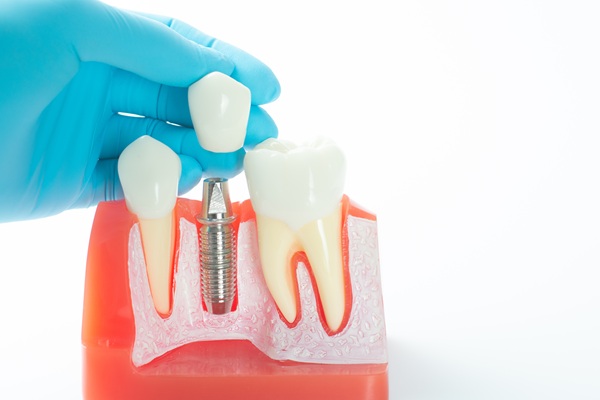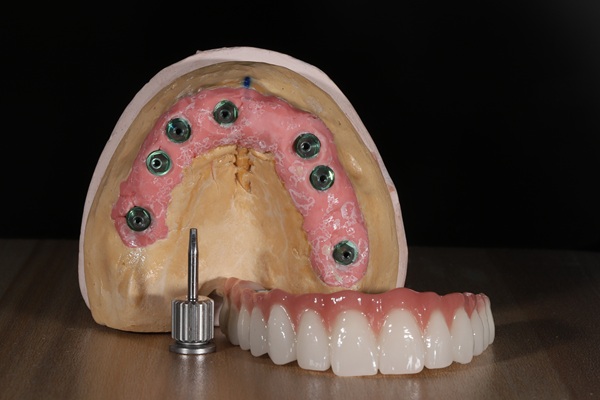Recovery Tips After Bone Grafting Surgery

Dentists sometimes perform bone grafting surgery as the first step of a treatment plan to install dental implants. They may also perform the procedure as a way to correct bone loss caused by periodontal disease. In the case of dental implant treatments, grafting may be necessary for a patient who lacks the bone mass or bone density needed to hold an implant.
Recovering after bone grafting
Bone grafting and dental implants are not for everyone. Patients will be evaluated before being cleared for the treatment. A good candidate for bone graft surgery should be healthy enough to make it through the surgery without complications. The patient should also have a strong immune system.
Patients will need to take proper care of themselves after surgery to reduce the risks of any complications developing post-op. Here are simple tips to help manage the recovery process.
1. Manage the bleeding
Bleeding and oozing are expected after bone grafts. The bleeding can be minimized by keeping the gauze pad the dentist places over the surgical site in place for at least 30 minutes after the procedure. If the bleeding continues after removing the gauze, lie down, keep the head elevated, and bite down on one or two pieces of gauze for up to 45 minutes without moving the gauze or letting up on the pressure. Repeat the process two to three more times as needed. Remember, bleeding is expected for the first couple of days following bone grafts.
2. Reduce soreness and swelling
Swelling and soreness around the surgical site are expected for the first two to four days following grafting surgery. An ice pack can be used to manage swelling for the first 24 to 36 hours after surgery. The pack should be applied for about 30 minutes at a time, with 30-minute breaks.
Once more than 36 hours have passed after surgery, a dry or moist heat pad at a medium setting should be used to manage any swelling. It can take up to 10 days for the swelling to subside after grafts.
3. Maintain excellent oral hygiene
Avoid brushing around the surgical site for the first 24 hours after getting grafts. Once a single day has passed, a saltwater rinse can be used to clean the mouth. Add half a teaspoon of salt into an 8-ounce cup filled with water, and rinse with the solution. Repeat the process up to six times per day, particularly after meals.
4. Take any medication as prescribed by the dentist
Patients may experience pain and discomfort for up to 10 days after the grafting procedure. The dentist might prescribe pain medication or prescribe antibiotics to prevent infection. Anti-inflammatories are sometimes prescribed with the swelling. A recovering patient should take all medication exactly as directed by the dentist. These drugs should always be taken after meals because they can lead to nausea when taken on an empty stomach.
5. Eat soft foods
Patients should avoid hot or hard foods and stick to lukewarm soft foods and cold drinks the day of the surgery. Patients can return to their regular diet the next day.
5. Rest
Patients should avoid vigorous activity to avoid pain and torn stitches for the first week after the procedure. They should also aim to get eight hours of sleep each night during this period because sleep is when the body does most of its repairs.
Need bone grafts?
Following these steps can help speed up your recovery after a bone grafting procedure. Call or visit our Palm Beach Gardens clinic for more recovery tips or to set up a consultation with our dentist.
Request an appointment here: https://corderoperiodontics.com or call Rafael E. Cordero, DDS PA at (561) 763-9221 for an appointment in our Palm Beach Gardens office.
Check out what others are saying about our services on Yelp: Bone Grafting in Palm Beach Gardens, FL.
Recent Posts
Appearance may be one of the first things people think about when it comes to tooth replacement. However, improved appearance is just one of the many benefits of replacing missing teeth. Tooth replacement can be key to improving not only how you feel about your smile but also boosting your oral health.Whether one chooses dentures,…
The jawbone is the part of the face that holds many essential elements together, such as the teeth, ligaments, and muscles; however, bone grafting may sometimes be necessary if the jawbone is too weak to perform these tasks. A person’s jawbone can deteriorate over time, whether due to age, genetics, poor oral health, cancer, or…
A periodontist can help improve gum recession. This is one of the first signs of gum disease. Seeing this dental care provider early can help you target the problem with the necessary treatment. Here are the details on how a periodontist can help fix receding gums.Getting a regular professional dental cleaning can remove the plaque…
There are many reasons for having a tooth extraction. Research shows that getting this procedure from a periodontist can be good for your dental health. Knowing when to do this can give you the right solution to your dental problem. Here are the details about when to see a periodontist for a tooth extraction.Studies reveal…


